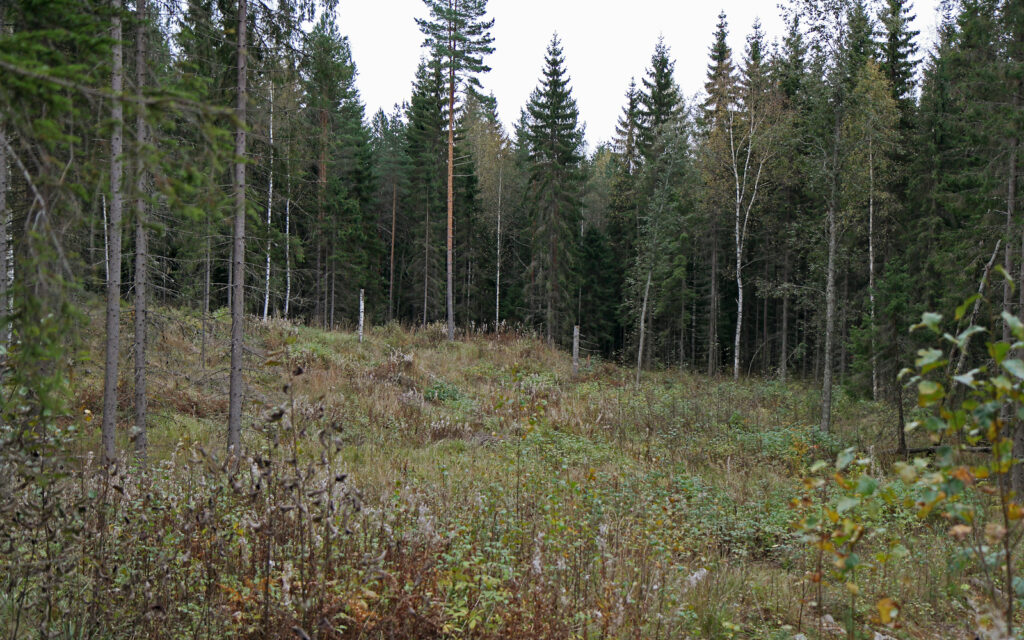New Forest Act has unexpected effects, too

A new Forest Act came into force in Finland in the beginning of 2014. It enables several new ways of carrying out forestry activities. So far, the impact of the act has been fairly limited, though it has caused some surprises along the way.
During the preparation of the act, the envisaged possibility to continuous-cover silviculture attracted a great deal of attention. The method has not, however, gained much popularity. Harvesting according to continuous-cover silviculture is classified as thinning, and only one percent of all thinnings in 2014 consisted of continuous-cover harvesting.
The areas so harvested have also been relatively small: the total area of small-scale clearcuttings was 1,602 and that of selective loggings 3,539 hectares, while in 2012, for example, the total area of thinnings in Finland was 190,000 hectares.
Upper-layer thinnings likely to increase
To support the profitability of forestry, the new act facilitates upper-layer thinnings, that is, removing the largest trees. In certain types of forests upper-layer thinning may be more profitable than lower-layer thinning, which consists of removing the smallest or weakest trees.
This is because after an upper-layer thinning, there will be plenty of trees left in the forest that are close to the size of mature logs, and they may reach the appropriate size quite rapidly. Using this method, then, allows logwood to be harvested twice within a short period of time.
This means that logging revenues may increase by more than 80 percent with pine and close to 70 percent with spruce. However, at the same time, the forest’s rotation period becomes longer.
Nevertheless, upper-layer thinnings have not increased significantly. In the case of individual sawmills they may have increased – one sawmill reports that as regards its wood procurement, the share of timber from upper-layer thinnings has risen to 20–25 percent.
Mr. Jussi Joensuu, head of wood procurement of the Koskitukki company says that “controlled upper-layer thinning” is in the interests of both the forest owner and the industry. The method was also available earlier, but it is now easier to use, thanks to the new act.
However, according to Joensuu, forest professionals are too stuck in “orthodox lower-layer thinnings”. It is true, though, that using the alternative would need some training.

Enlarging forest compartments is now possible
Under the former Forest Act, regeneration felling was not possible before the trees had reached sufficient size and maturity for use as logwood. The new act removed this restriction: clearcutting is now allowed in all forests, regardless of their age.
The objective was to increase flexibility on the timber markets: the forest owner can now sell more of younger trees if the price is right. What is surprising is that the change has created the possibility to increase the size of forest compartments.
In Finland, forestry activities normally concern individual forest compartments, whose boundaries are defined on the basis of the characteristics of the forest, but also of previous forestry activities.
And the compartments are very small, which decreases the profitability of harvesting in particular. The smallest compartments are in family forests in southern Finland, with an average size of 1.2 hectares, the national average being no more than 1.5 hectares (read more about this here).
Previously, it was very difficult to move the boundaries of compartments, but the new act has made this possible by, for example, allowing regeneration fellings to be extended to adjacent compartments, possibly with younger forest stands.
All in all, regeneration fellings have now been carried out in forest stands that, under the previous act, would have been too young. The total number of such stands in 2014 was 16,315, with a total area of 16,688 hectares. Of them, 5,802 stands were located next to felling sites with older, mature forest.
Safeguarding mires habitats
Natural regeneration, too, was made easier, especially in northern Finland, by extending the time period during which a new stand must be created after regeneration felling. In addition, the requirements concerning soil preparation in connection with the natural regeneration of spruce stands were relaxed.
The new act promotes biodiversity by making it easier to exclude low-productive mires from forestry. In practice, this was achieved by removing the requirement to regenerate the stands on such mires after clearcutting. This means that after a clearcutting, the mire habitat can begin to return to its natural condition.
All in all, there are 736,849 mire sites with a total area of more than 1.4 million hectares that could be affected by this decision.
In 2014, fellings were carried out on 6,612 of these sites, with a combined area of 10,164 hectares. How many of them have been allowed to start the process towards their natural condition is not known.
The source of the article is the seminar held by the Ministry of Agriculture and Forestry in Finland, on the 25th of February, 2015. Unfortunately the material of the seminar is published only in Finnish.
Kirjoita kommentti